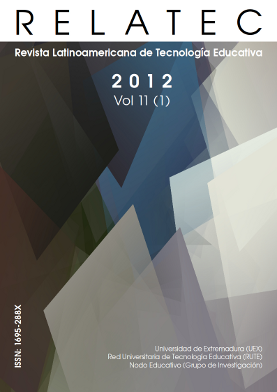Usos de Twitter en las universidades iberoamericanas
Keywords:
Redes Sociales, Twitter, Universidad, Microblogging, Web 2.0, ParticipaciónAbstract
Las redes sociales ofrecen fórmulas eficaces a la institución de educación superior tanto para desarrollar actividades formativas innovadoras apoyadas en la participación e interacción entre docentes y estudiantes, como para mejorar su identidad corporativa, difundir y transmitir información institucional. La presente investigación analiza el uso de Twitter que hacen las 20 primeras universidades iberoamericanas (Ranking Shangai, 2012), mediante la identificación de sus listas, seguidores y la generación de tweets y retweets. Los resultados más significativos ponen de manifiesto por un lado, que algunos docentes la usan como herramienta catalizadora del proceso de enseñanza-aprendizaje a partir de los hashtags, y por otro, que a nivel institucional, las universidades lo hacen para dinamizar la participación e interacción con la comunidad educativa mediante los Tweets. El promedio de seguidores de las universidades estudiadas en Twitter es de 4.772 usuarios, y de 114 tweets usuarios (2011). La Universidad Nacional Autónoma de México es la que posee más (35.679). Casi todas ven la importancia del uso de Twitter, sin embargo se infrautiliza como canal de comunicación directa y efectiva. Los docentes deben actualizarse para manejar las TIC y las redes sociales, descubrir su aplicabilidad educativa y rentabilizar el tiempo de interacción con los estudiantes. Además, la comunicación entre las universidades y la comunidad educativa podría verse optimizada con Twitter si para el envío de mensajes efectivos aprovecharan sus bases de datos como canal de difusión viral.
Social networks offer effective ways to higher education centers to develop innovative training activities supported by the participation and interaction between teachers and students and in the same way to improve their corporate identity, broadcasting and transmiting corporate information. This research analyzes the usage of top 20 Latin American Universities (Sanghai Ranking, 2012) that participate in Twitter by identifying their lists, fans and tweets and retweets. The most significant results show that some teachers use it as a tool that fosters the teaching and learning process via the hashtags, and furthermore, that at the institutional level, universities boost the participation and interaction with the educational community through tweets. The average fans level of the studied universities is 4,772 Twitter users considering tweets of 114 users (2011). The National Autonomous University of Mexico is the one with most (35,679) followers. Almost al of them see the importance of using Twitter, however Twitter is underused as a channel of direct and effective communication. Teachers should be trained to use ICT and social network to discover their educational applicability and to take advantage of interaction time with students. Furthermore, communication between universities and their educational communities could be optimized using Twitter to send effective messages to exploit their databases as a viral distribution channel.
Downloads
Downloads
Published
Issue
Section
License
Authors who publish in this journal accept the following conditions:
1. The Author retains copyright in the article. Upon acceptance of the article, the author shall grant to the Publisher the right of first publication of the article. with the dcoument registered with the Creative Commons Attribution-NonCommercial-NoDerivative 4.0 International (CC BY-NC-ND) license, which allows to third parties to use what is published whenever they mention the authorship of the work and the first publication in this journal.
2. Authors can make other independent and additional contractual agreements for the non-exclusive distribution of the article published in this journal (eg, include it in an institutional repository or publish it in a book) provided they clearly indicate that the work was published for the first time in this journal.
3. Authors are allowed and recommended to publish their work on the Internet (for example on institutional or personal pages) before and during the review and publication process, as it can lead to productive exchanges and a greater and faster diffusion of published work (see The Effect of Open Access).









